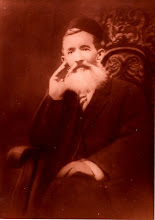A past figure for autism prevalence that is sometimes bandied about is the famous 1 in 10,000 prevalence that, at least in some instances, those who state this figure, claim that this is a recent prevalence figure for autism. In the latest post in Dad of Cameron's blog, http://www.autismstreet.org/weblog/?p=191#commentspediatrician Jay Gordon gives a 1-2/10,000 figure of autism in the 1980s. As I have mentioned in a couple of previous posts Dr. Bob Hedron who heads the MIND institute claimed in his ASA presentation that the 1 in 10,000 figure was the autism prevalence as recently as 1993. As those who read my previous post will remember autism author and consultant Bill Stillman cited a 1/10,000 figure for 1990. also David Kirby author of the book trying to demonstrate that autism may be caused by vaccines entitled evidence of harm claimed the prevalence was 1/10,000 in 1987 http://www.evidenceofharm.com/ Well, there seem to be others that claim this.
The observant reader will remember in my last post about Bill Stillman and his use of this number, I stated that this figure, from what I knew about it, came from a study done by Darold Treffert that was published in 1970.
I have looked at an interesting article on Dr. Treffert's web page about this study and some other issues in the field of autism here: http://www.wisconsinmedicalsociety.org/savant_syndrome/savant_articles/autistic_disorder
Apparently Treffert's study originally found a prevalence of more than 3/10,000 of autism rather than the 1-2/10,000 number that is often preached by those who claim we are in the midst of an autism "epidemic" as if it were gospel. So where does this 1-2/10,000 number come from?
In the study, Dr. Treffert did a survey between 1962-1967 of what was then called childhood schizophrenia. Though the term autism has been in existence as a noun since 1943 (it has been in existence as an adjective since 1911) it was never added to the diagnostic nomenclature of the DSM until 1980. Dr. Treffert divided the children into three different groups. The first group had classic Kanner type autism, which I think was the type that was originally defined by Kanner in 1943. The second group had non-classical autism. These children would probably be labeled PDD/NOS nowadays. The third group was "probable autistic features with organicity". One must remember that at the time this survey was carried out in the 1960s, it was believed in large part that classic autism had an emotional etiology rather than an organic one, which is probably the reason for the third group in Treffert's study. Approximately 25% of these children were part of the first group with the classic Kanner's autism. This is what probably accounts for the 1/10,000 figure that is quoted by these people. But is this 1/10,000 figure really rational? One would have to say no, because attitudes about autism diagnostic criteria have clearly changed. The 2007 CDC study which accounts for the famous quoted 1/150 prevalence included all parts of the spectrum, autism, PDD/NOS, Asperger's, etc. It is also possible that children with problems like CDD and Rett's which nowadays might be counted as separate disorders from autism were also counted.
Since Treffert was collecting the data from his study between the years 1962-1967 and the study was published in 1970, I am not sure where the years 1987 from Kirby, 1990 From Stillman and 1993 from Bob Hedron and the 1980's 1-2/10,000 figure that Dr. Jay Gordon cites come from. This still remains a mystery.
Subscribe to:
Post Comments (Atom)


8 comments:
Both schizophrenia and autism rise with increasing paternal age and this has been known beginning in the 1950s but not reported to the public. Yes 1-10,000 seems underestimated. I believe average paternal age is much higher these days so more autism and schizophrenia. http://www.schizophreniaforum.org/for/curr/Malaspina/default.asp
Try Baird G. et al. the Lancet 2006 - SNAP Project, Prevalence of Disorders of the Autism Spectrum. 116 per 10,000. Also has figures for DSM III criteria. Overall, 20% LFA, 80% AS & HFA. Also, circa 30% of the rise has been quite firmly attributed to diagnostic substitution.
The mythical 1 in 10,000 is also a favourite of Canadian autism advocates (FEAT, etc) who have spread it via their "Fact Sheet" to politicians (who have repeated the myth on the floor of Parliament) and the general public. I have yet to find the source (and have asked plenty of people who use the "fact")
more on the 1:10,000 myth
Since Treffert was collecting the data from his study between the years 1962-1967 and the study was published in 1970, I am not sure where the years 1987 from Kirby, 1990 From Stillman and 1993 from Bob Hedron and the 1980's 1-2/10,000 figure that Dr. Jay Gordon cites come from. This still remains a mystery.
It could be a mystery to Dr. Jay Gordon too.
My question to him, "Dr. Gordon, where did you get the 1-2 in 10,000?" went unanswered even though he's responded since.
i have autism ,i dont need a cure
i find you to be very negitved person .if yoiur not happy being autisc that fine but not all ofd us dewll on all these things .it part of who i am it not easy but i try not to dewll on it all the time .or i be missrible i think there are other disibilty that are a lot worse then autism
i think there are other disibilty that are a lot worse then autism
You might be right about that. Illiteracy might be one of those. How would you feel about a cure for that?
You can only be so autistic until you are literally brain dead, autism is just a label for a variety of impairments and you can only be so mentally handicapped before you can't even maintain your life and forgets how to breathe.
Post a Comment